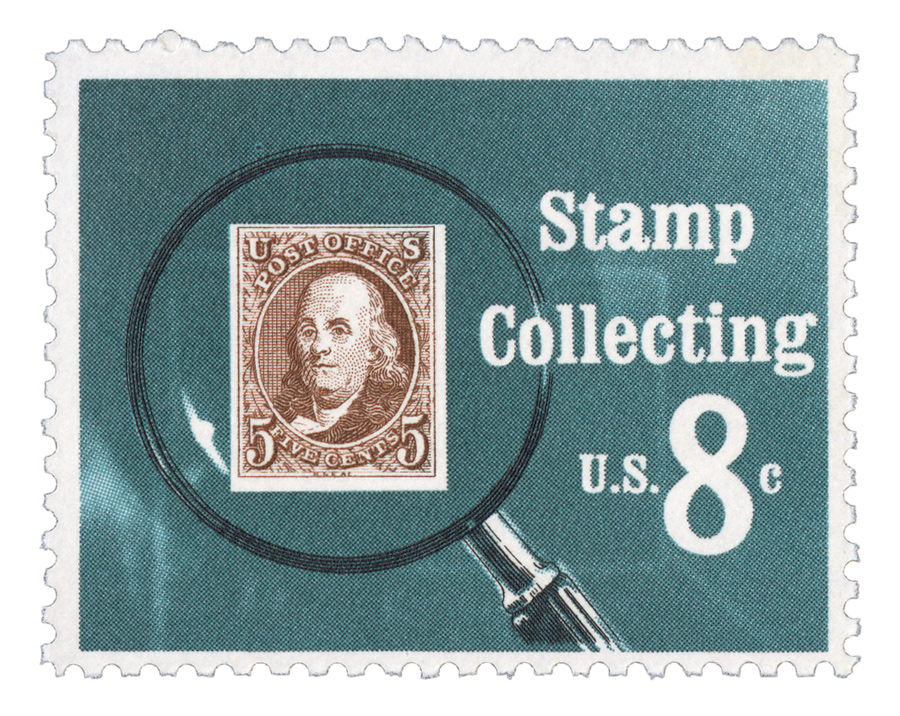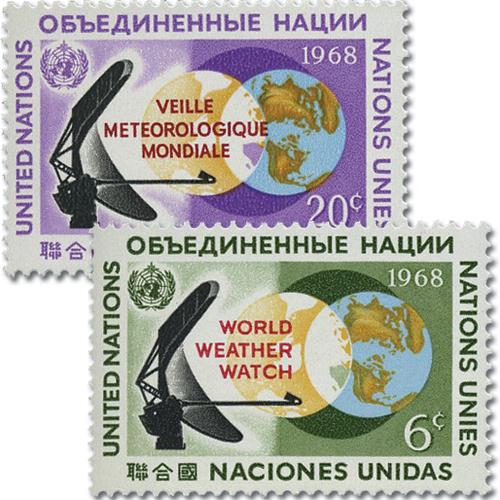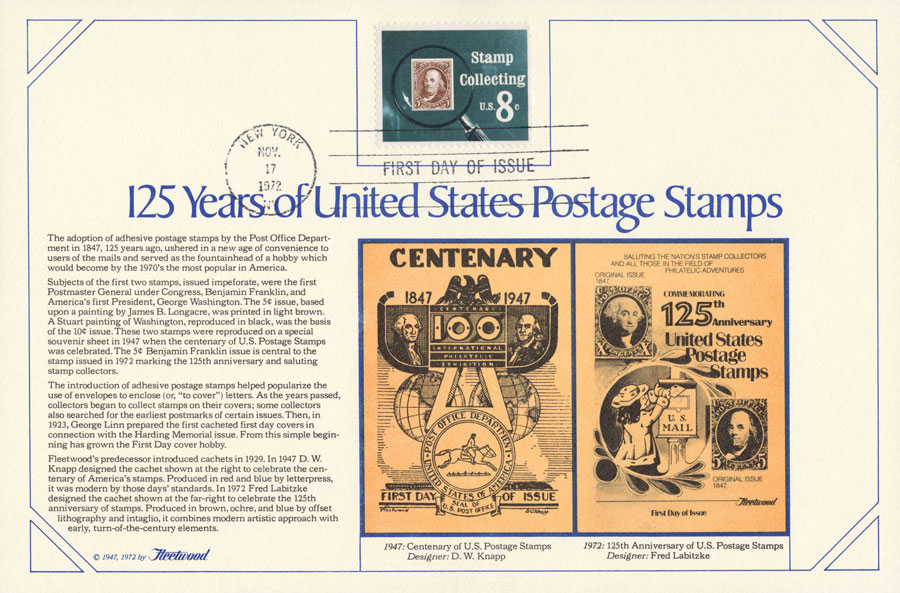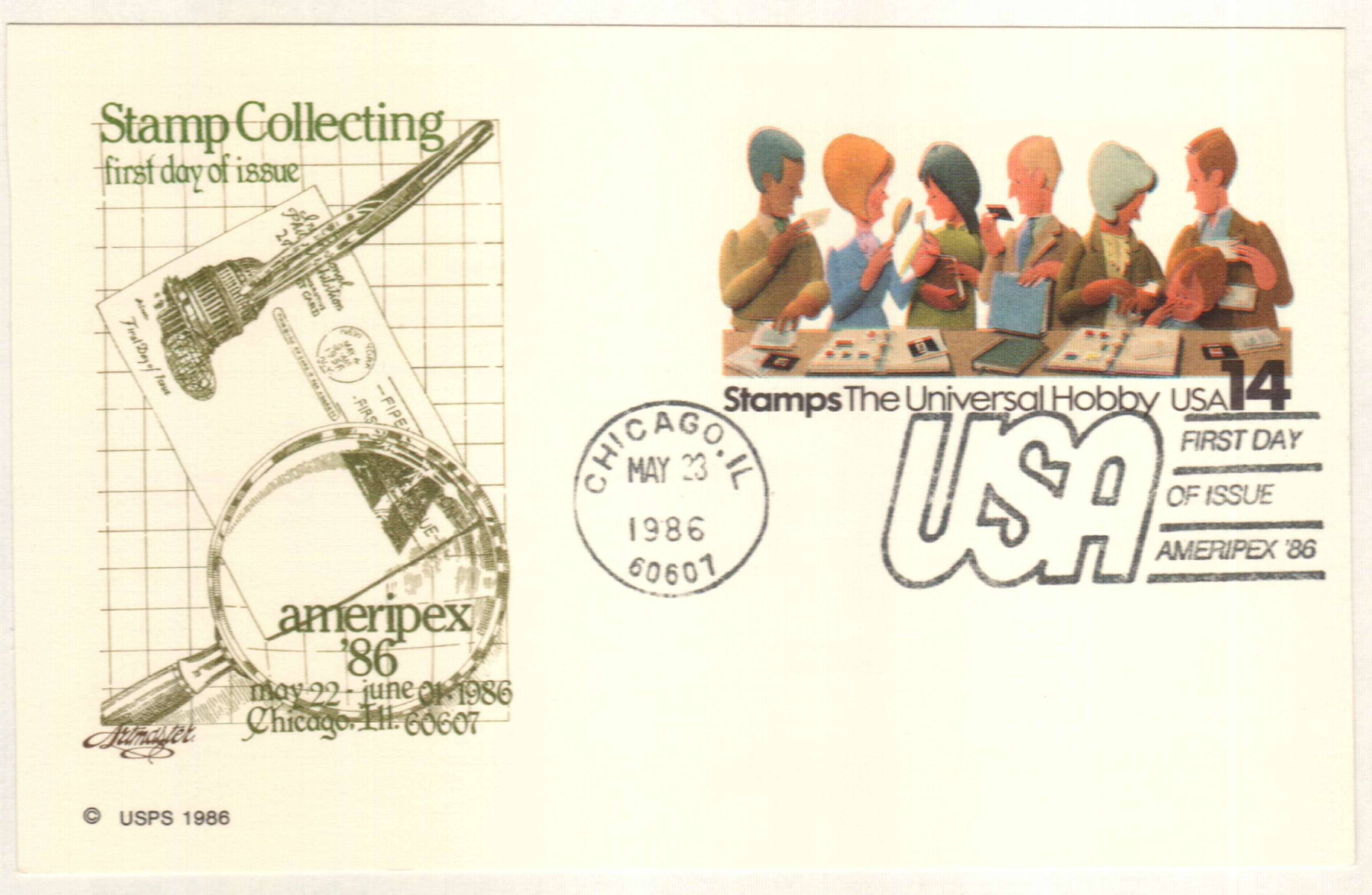
# 1474 FDC - 1972 8c Stamp Collecting
The World Series Of Philately

On September 19, 1968, the American Philatelic Society (APS) introduced the World Series of Philately (WSP).
The competition was unveiled at the 82nd Annual APS Convention held in Rochester, New York that ran from September 19-22. The structure of the competition was developed by Postmaster General Gordon Morison and was an answer to calls made by serious collectors for several years.

Prior to the WSP, collectors could only see large numbers of award-winning stamp exhibits at international exhibitions. As a result, most stamp shows didn’t have many exhibits. The WSP encouraged stamp shows to improve their exhibits by holding a national competition. Collectors could exhibit their most impressive stamps at national exhibitions. Each show would declare a winner, and those winners would then compete to be the Champion of Champions at that year’s annual APS Stamp Show.

From the time it was announced, the WSP was widely popular. It gave show organizers a reason to plan even bigger and better shows. They actively sought high-quality exhibits, promoted their shows on a wider scale, and held their shows on weekends that didn’t compete with other WSP shows. Their shows also offered interesting seminars and encouraged collectors to participate in the APS.

Because many shows and collectors wanted to participate in this prestigious competition, the APS established a set of strict rules to qualify. You can read them here.
To participate in the WSP, exhibitions are required to meet all of the APS’s requirements and be certified by the APS. They also have to maintain those standards to continue to participate. The APS limits the number of shows eligible to participate to 35. Other shows that qualify are placed on a waiting list.

Winners of the Champion of Champions award are then eligible to participate in international exhibits if they chose.
Click here for more about the WSP, including a list of participating shows.
The World Series Of Philately

On September 19, 1968, the American Philatelic Society (APS) introduced the World Series of Philately (WSP).
The competition was unveiled at the 82nd Annual APS Convention held in Rochester, New York that ran from September 19-22. The structure of the competition was developed by Postmaster General Gordon Morison and was an answer to calls made by serious collectors for several years.

Prior to the WSP, collectors could only see large numbers of award-winning stamp exhibits at international exhibitions. As a result, most stamp shows didn’t have many exhibits. The WSP encouraged stamp shows to improve their exhibits by holding a national competition. Collectors could exhibit their most impressive stamps at national exhibitions. Each show would declare a winner, and those winners would then compete to be the Champion of Champions at that year’s annual APS Stamp Show.

From the time it was announced, the WSP was widely popular. It gave show organizers a reason to plan even bigger and better shows. They actively sought high-quality exhibits, promoted their shows on a wider scale, and held their shows on weekends that didn’t compete with other WSP shows. Their shows also offered interesting seminars and encouraged collectors to participate in the APS.

Because many shows and collectors wanted to participate in this prestigious competition, the APS established a set of strict rules to qualify. You can read them here.
To participate in the WSP, exhibitions are required to meet all of the APS’s requirements and be certified by the APS. They also have to maintain those standards to continue to participate. The APS limits the number of shows eligible to participate to 35. Other shows that qualify are placed on a waiting list.

Winners of the Champion of Champions award are then eligible to participate in international exhibits if they chose.
Click here for more about the WSP, including a list of participating shows.





